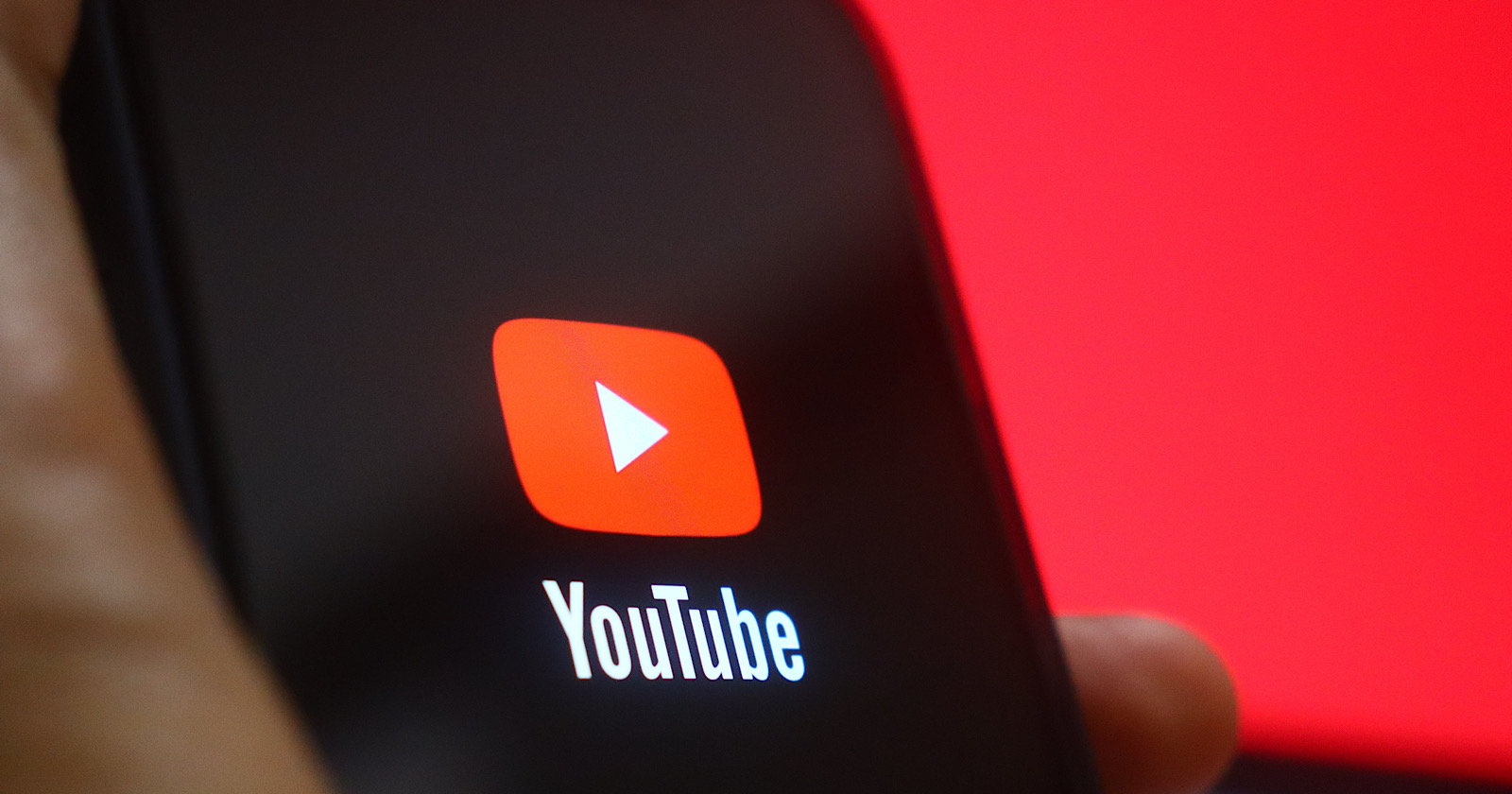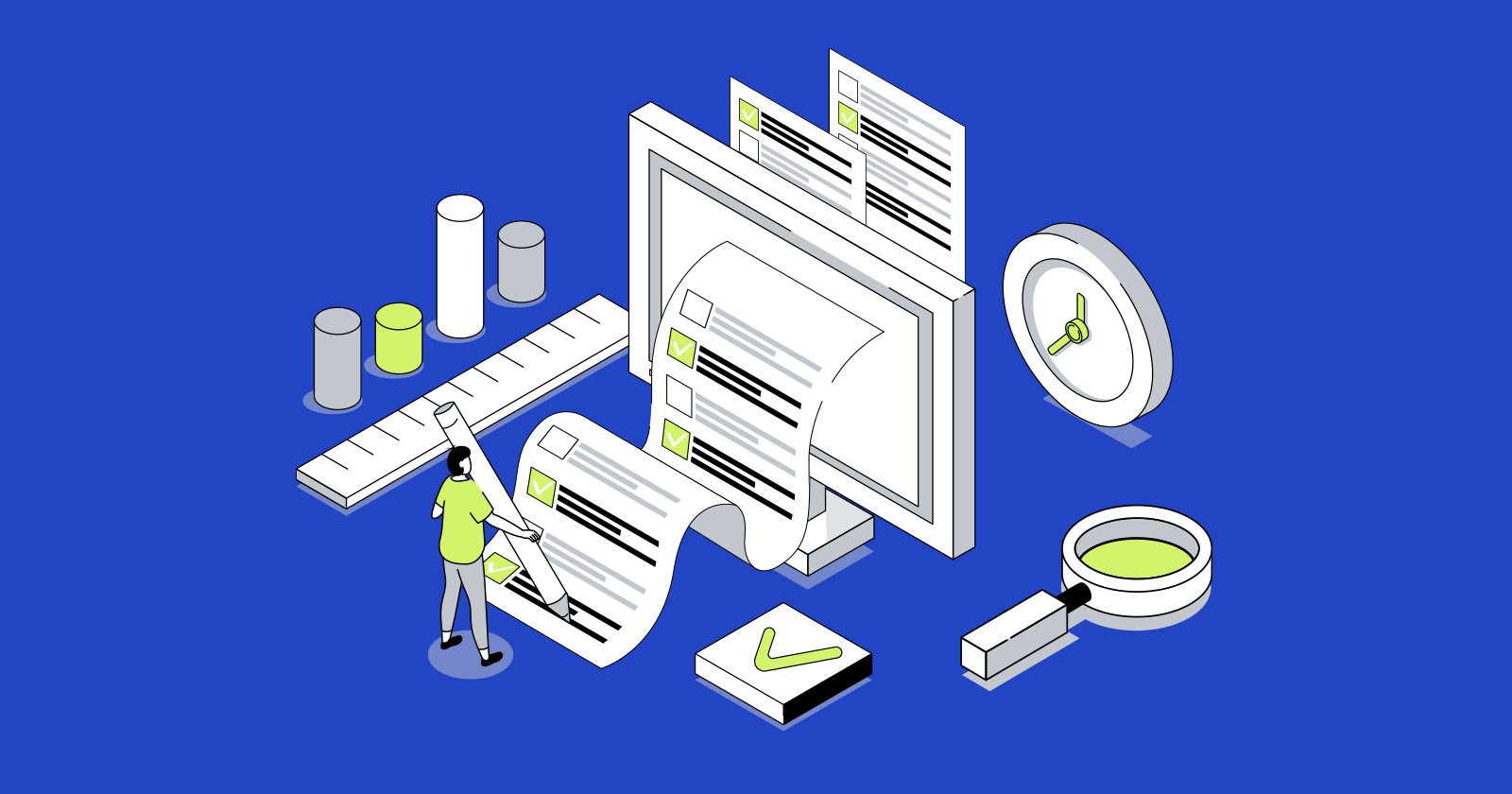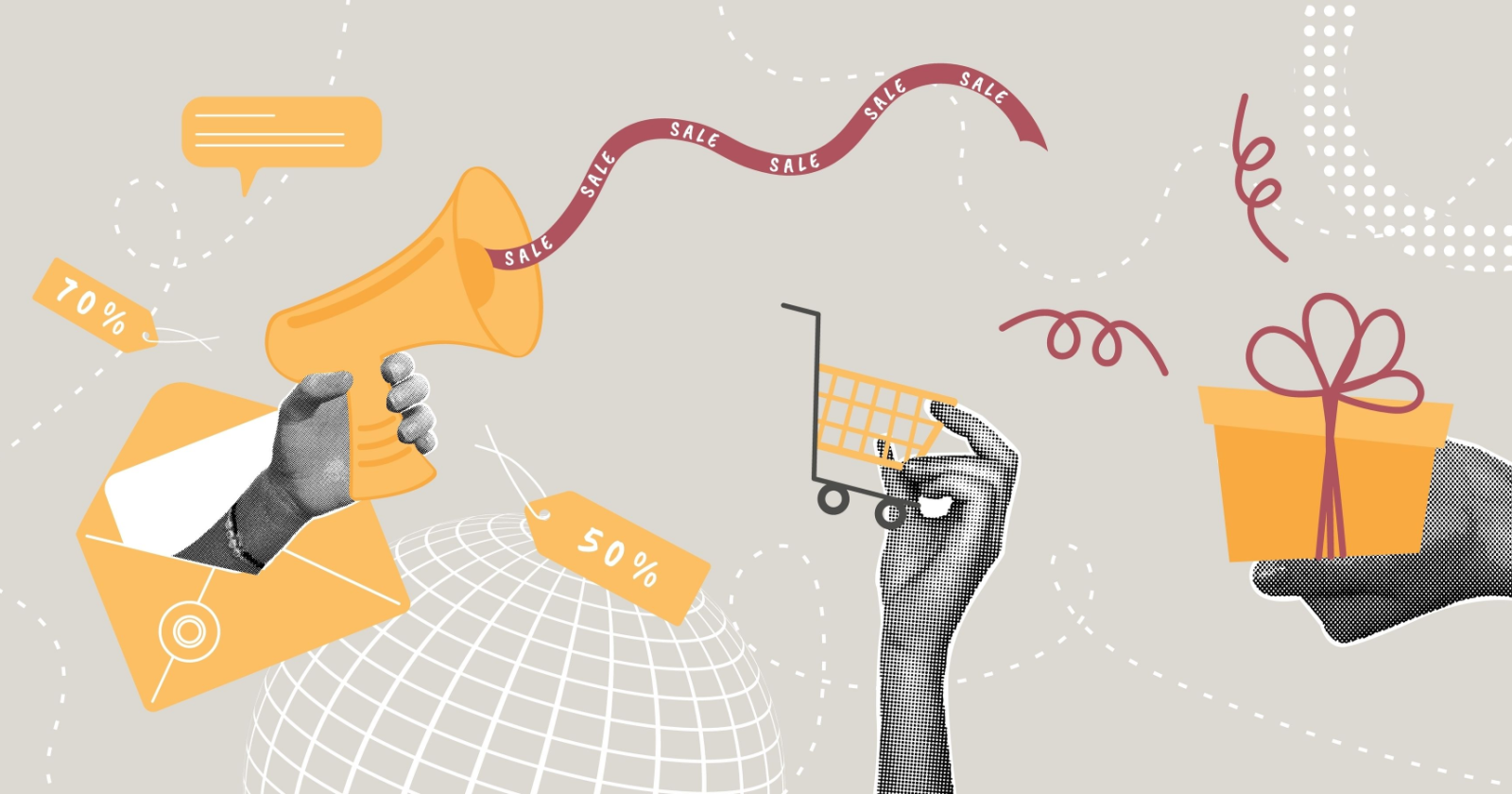Looking to grow your marketing team? It all starts with marketing job descriptions written to attract your best potential.
Wording, structure, even emojis — everything counts. I’ve encountered countless job descriptions during my time as a marketer and have learned a thing or two along the way.
Not surprisingly, 52% of job seekers say the overall quality of a job description is an influencing factor when they decide to apply for a job. So I like to think of job descriptions as being a powerful tool for advertising your company.
If you want to learn how to craft an irresistible one, start with this guide that includes 17 real-life examples and learn how brands market their open positions.
Table of Contents
Marketing Job Description
Marketers are responsible for planning, creating, and executing marketing campaigns to expand their company’s reach and potential customer pipeline. A marketing job description should include the necessary qualifications, responsibilities, and skills required for success in the role.
As you embark on writing job descriptions for open roles on your team, make sure you include the following pieces of information.
Marketing Job Requirements and Qualifications
Before you draft a clunky job post, remember: less is more. The right candidates are out there — don’t scare them off with an impossible checklist.
- Start with the must-haves like core skills, the level of seniority, education, and areas of previous experience a candidate would need to have to be successful in the role.
- Include soft skills like strategic and agile thinking, communication, and organizational skills.
- Specify the role details, like whether it is remote or hybrid, and how many days would be required in the office.
- Ask for realistic requirements for your candidate pool, given your compensation budget.
- Stay open to non-linear paths. The best marketers don’t always come from a traditional background, especially since few have a marketing major.
Note: The requirements and qualifications section can be intimidating for some job applicants, and if it’s too extensive, you could scare off candidates who may be a good fit for the role, even if they have a different level or type of experience.
I love how HubSpot increases the pool of applicants by adding a genuine nudge to apply.

Marketing Job Responsibilities
This section should clearly outline what tasks and duties the person in this role will be responsible for. When a candidate reads the job responsibilities section, they should be able to clearly understand what the role entails and how the role fits into the broader organization.
Pro tip: Avoid overly narrow criteria that can limit diversity and miss candidates with unconventional but valuable experience. Here’s how Lemlist approaches a listing of job responsibilities for a product marketing role:

The company bolds the jobs to be done and gives a succinct description.
Marketing Job Skills
Similar to job requirements and qualifications, this section should state what technical and/or soft skills are needed for a candidate to perform in the role.
For example, if you’re looking to hire a content marketer, you may list “strong writing skills” as a mandatory skill. Or, if you’re hiring a marketing analyst, you may list “data analysis” as a skill needed to be successful in the role.
See an example:

Now, let’s discuss the ways a job description will need to be customized for a particular role.
Types of Marketing Jobs
The job description you craft will need to be highly tailored to the role you’re hiring for. After all, if you’re hiring for a technical SEO role, you don’t want to create a description that will attract newbies. Here are some of the most common types of marketing jobs available for modern marketers:
- Digital Marketing
- Content Marketing
- Product Marketing
- Brand Marketing
- Event Marketing
- Marketing Analysis
- SEO
- Public Relations
- Fractional Marketing
- AI Marketing
Ready to write a job description that attracts stellar candidates? Check out this list of sample descriptions for common marketing roles.
Marketing Job Descriptions
- Marketing Assistant
- Marketing Coordinator
- Social Media/Community Manager
- Blog Manager
- Inbound Marketing Manager
- Content Marketing Manager
- SEO Manager
- Email Marketing Manager
- Product Marketing Manager
- Paid Marketing Manager
- AI Growth Marketing Manager
- AI Writer
- Public Relations/Media Relations Manager
- Marketing Operations Manager
- Director of Marketing
- VP of Marketing
- Chief Marketing Officer
1. Marketing Assistant Job Description
The marketing assistant role is key to helping a marketing organization run smoothly and effectively. Individuals applying for this role should have demonstrated the ability to handle a variety of administrative tasks efficiently and independently. They must be fast learners and agile.
Job Description
Our team is hiring a marketing assistant to keep our organization running smoothly. The ideal candidate will have experience managing multiple projects for key stakeholders and maintaining excellent communication.
Responsibilities
- Support the marketing leadership team through the organization and administrative support for various projects.
- Maintain strong communication between marketing executives and internal and external stakeholders.
- Coordinate employee meetings and communications for the marketing department.
- Maintain executive schedules and oversee project load.
- Plan, prepare, and deliver presentations on behalf of the marketing team.
- Conduct research for key marketing campaigns.
Requirements
- High school diploma or equivalent experience. BA/BS is a plus, but is not required.
- Experience managing multiple projects and adhering to deadlines.
- Clear copywriting and editing skills.
- Strong organizational, communication, and customer service skills.
- Proficiency in Microsoft Office or Google Workspace.
What Hiring Managers Look for in a Marketing Assistant
An effective marketing assistant should be organized, communicative, and able to prioritize while working on various projects. Candidates who can demonstrate these abilities through work experience could be a good fit for a marketing assistant role.
Real-World Example
This job opening from 24 Seven Talent is a great example. Not only did they list expected skills, but they also disclosed a salary and benefits package.

2. Marketing Coordinator Job Description
Do you have someone on your team making sure marketing activities are organized and cohesive? If not, consider hiring a marketing coordinator. In this role, an individual is responsible for managing various projects within the marketing organization to ensure they are on time and within their budget.
Job Description
Our team has a suite of exciting projects underway and we are looking for the right candidate to help us execute them in the marketing coordinator role. With various campaigns and initiatives on the horizon, we’re hiring a skilled marketing coordinator to design and oversee marketing campaigns across platforms to reach company goals and increase brand awareness.
Responsibilities
- Work directly with project managers, designers, social media, and content teams to design and implement key marketing campaigns.
- Perform competitive research to understand what’s happening in the market, and incorporate your findings into each campaign for better results.
- Facilitate cross-functional communication among project stakeholders.
- Conduct analysis to determine the effectiveness of each marketing campaign, and report key findings to stakeholders.
Requirements
- BA/BS or equivalent working experience.
- Working knowledge of customer relationship management (CRM) and content management systems (CMS) like Content Hub.
- Demonstrated project management experience.
- Research and analytical skills.
- An understanding of digital marketing tools and tactics.
What Hiring Managers Look for in a Marketing Coordinator
A qualified candidate for a marketing coordinator position should have experience supporting marketing campaigns and conducting research to understand the company’s customer base and ability to reach campaign objectives.
3. Social Media/Community Manager Job Description
Social media has become an integral part of business. A social media coordinator is the top priority hire for 2025 in marketing teams, according to HubSpot’s 2025 State of Marketing.
So if you aren‘t yet using social media marketing to your advantage, it’s time to start. And to do so, you need a social media manager who not only knows social media platforms like they know the alphabet, but who also knows how to develop strategies specific to various social networks, track the right metrics, and integrate the best tools and practices on those platforms.

Source
Job Description
Do you tweet, share, and post to social media in your sleep? Do you know what it takes to grow an online community? We’re looking for a social media manager to manage our social media accounts by implementing strategies and tactics that grow our followers, engage and retain them, and help convert them into leads, customers, and active fans and promoters of our company.
You should have command of best practices and trends in social media marketing, enjoy being creative, and understand how to both build and convert a digital audience.
Responsibilities
- Build and manage the company’s social media profiles and presence, including Facebook, X, LinkedIn, TikTok, and additional channels that may be deemed relevant.
- Create shareable content appropriate for specific networks to spread both our brand and our content.
- Monitor and engage in relevant social discussions about our company, competitors, and/or industry, both from existing leads and customers as well as from brand new audiences.
- Run regular social promotions and campaigns and track their success (e.g., X chats, LinkedIn discussions, etc.).
- Work alongside other marketers and content marketers to help distribute content that educates and entertains our audience and supports marketing goals.
- Drive consistent, relevant traffic and leads from our social network presence.
- Explore new ways to engage and identify new social networks to reach our target buyers.
- Track, measure, and analyze all initiatives to report on social media ROI.
Requirements
- BA/BS degree or equivalent work experience.
- Active and well-rounded personal presence in social media, with a command of each network and its best practices.
- Excellent communicator and creative thinker, with an ability to use both data and intuition to inform decisions.
- Proficiency in using social media software (e.g., HubSpot’s Social Inbox ) to monitor social media conversations. You will be our ear to the ground to route the appropriate marketer, sales rep, and/or support rep to social conversations.
- Bonus experience and skills include Adobe Creative Suite, demand generation, inbound marketing, and blogging.
What Hiring Managers Look for in a Social Media/Community Manager
A genuine interest in the latest social media trends and the ability to implement and carry out relevant social media campaigns.
Skill up your social media managers with HubSpot Academy’s Social Media Courses. Plug them into the onboarding program to ensure your brand follows the latest trends and best practices.
Choose from YouTube Marketing, Facebook Ads, End-to-end Instagram Strategy, and more.

Source
4. Blog Manager Job Description
Did you know that SEO blogging was the top B2B marketing channel, resulting in ROI, according to HubSpot’s State of Marketing Report 2025? Likewise, content marketing ranked in the top three for B2C.
If you aren’t taking business blogging seriously enough, now would be the time. Hiring a dedicated blogger or blog manager is crucial to creating remarkable content.
Our research shows that blog posts and interviews still take 3rd and 4th place across content formats for 2025.

Source
You need someone who is not only a great writer and editor, but who can also keep your brand voice consistent across daily published content and understand how to use your blog to generate qualified traffic and leads for your business.
Job Description
We are seeking a savvy wordsmith to join our blogging team. Candidates must have a knack and love for writing, a comprehensive understanding of the industry, and experience in blogging to achieve business goals. The blogger will be expected to sustain and develop the company’s voice across all blog content.
Responsibilities
- Writing various types of articles on a wide range of topics for our blog.
- Providing feedback to other contributors and editing other writers’ content.
- Optimizing content for search engines and lead generation.
- Contributing to long-form content projects such as ebooks.
- Conducting analytical projects to improve blog strategies/tactics.
- Growing blog subscribers, converting visitors into leads, and expanding our blog’s overall reach.
Requirements
- A passion and strong understanding of the industry and our business’s mission.
- Exceptional writing and editing skills, as well as the ability to adopt the style, tone, and voice of our business’s various types of content.
- An analytical mind and interest in using data to optimize/scale blog marketing strategies and tactics.
- Excellent organizational skills to work independently and manage projects with many moving parts.
- 2-3 years of marketing and content creation experience.
- Familiarity with SEO, website testing, and analytics tools, including SEMrush, Ahrefs, SurferSEO, Google Analytics, Google Search Console, and VWO.
- A working knowledge of HTML/CSS/JavaScript and experience with CMS platforms such as WordPress.
What Hiring Managers Look for in a Blog Manager
An ideal blog manager will understand your buyer personas so well that published content addresses their needs, wants, and problems. Plus, blog managers must be well-versed in analytics and CMS platforms like HubSpot CMS or WordPress. Ideally, they know how to work with WordPress plugins and AI agents that facilitate blog posting.
5. Inbound Marketing Manager Job Description
This role is crucial for small businesses that want to scale up and for startups since inbound marketing plays a huge role in attracting leads at lower costs than other channels.
If this is the case, you’ll likely be looking to hire an all-in-one inbound marketer — someone who can build and grow your inbound marketing strategy from the ground up.
Job Description
We are looking for an amazing, data-driven inbound marketer to own the majority of our company’s marketing funnel. You will be in charge of attracting site traffic, converting that traffic into new leads for the business, and nurturing those leads to close into customers, the latter of which sales leadership will help you accomplish.
Responsibilities
- Build and manage a rich content/editorial calendar that attracts a qualified audience to our owned properties (including blog posts, whitepapers, ebooks, reports, webinars, infographics, etc.).
- Grow new leads, including marketing-qualified leads, by converting site traffic through calls-to-action, landing pages, and lead generation content (including offers).
- Optimize our marketing automation and lead nurturing processes through email, content, and social channels.
- Establish closed-loop analytics with sales to understand how our inbound marketing activity turns into customers, and continually refine our process to convert customers.
Requirements
- BA/BS degree or equivalent work experience.
- 3+ years of experience in SEO, paid search, or digital marketing, with team leadership experience.
- Strong skills in Google Ads, LinkedIn Ads, Facebook Ads, and SEO tools (Google Analytics, SEMrush, Ahrefs, Clearscope, etc.).
- Excellent communicator and creative thinker, with an ability to use data to inform all decisions.
- Proficiency in AI-powered tools, marketing automation, and blogging software in order to generate traffic, convert visitors into leads, and nurture them (using dynamic workflows) into converted customers.
- Bonus skills: HTML/CSS, Adobe Creative Suite.
What Hiring Managers Look for in an Inbound Marketing Manager
Look for someone who is very self-motivated and versatile … and gets stuff done.
Want to grow in-house expertise? Get your marketing specialists to scrutinize HubSpot’s Inbound Marketing Framework. Learn from pioneers and run result-oriented campaigns.
6. Content Marketing Manager Job Description
Marketing offers and downloadable content are the backbone of inbound marketing, serving as the fuel for all your inbound marketing strategies, including email, social media, search, lead generation, etc. Without marketing offers, your website visitors would have no reason to convert on your website and provide you with the contact information you need to segment, nurture, and close them into customers.
Marketing offers can include everything from educational ebooks to webinars, to free trials … the list goes on. Designing and creating this type of content is time-consuming and specialized. Time to call in a new member of your dream team to support your content marketing efforts.
Job Description
We are looking for a prolific and talented content creator to write and produce various types of downloadable content and blog regularly, to expand our company’s digital footprint, awareness, subscribers, and leads. This role requires a high level of creativity, attention to detail, and project management skills.
Responsibilities
- Create 1–2 free resources each month to drive leads, subscribers, awareness, and/or other important metrics (examples include ebooks, whitepapers, infographics, guides, templates, etc.).
- Blog on an ongoing basis to support and promote your offers and to attract site visitors through search, social media, and email subscribers.
- Grow our subscriber base by providing them with regular, helpful content that’s aligned with their needs and interests.
- Collaborate with designers, product marketers, sales professionals, and external influencers, and industry experts to produce relevant content that meets the needs of both key stakeholders and our audience.
- Convince others that your creative ideas are worth investing time and effort in. This role is at the core of the marketing team, and others will rely on your work every single day.
Requirements
- BA/BS degree or equivalent working experience.
- Past experience producing content for the web specifically, as well as channel-specific knowledge (blog, SlideShare, Facebook, X, etc.).
- Past experience building audiences either online or offline.
- A dual-minded approach: You’re highly creative and an excellent writer but can also be process-driven, think scale, and rely on data to make decisions.
- Proficiency with Adobe Creative Suite (particularly Photoshop and InDesign).
What Hiring Managers Look for in a Content Marketing Manager
Ideal candidates for the content marketing manager role should have experience creating and implementing effective content strategies. Seek their portfolio of content and measurable, ROI-connected results to talk about during the interview. How did the content perform and support overall business objectives?
Keep in mind that the average salaries for this role are about $127,000 – $210,000 for experienced candidates and include a chunk of nice benefits. Think of your offering if you’re aiming to attract middle- and senior-level talent.
Real-World Example:
Here’s what Vanta offers for a mid-senior position:

7. SEO Manager Job Description
A great SEO specialist is not only about keyword research. They must understand the complexity and integrity of all marketing activities and be able to integrate growth SEO practices to move the needle.
Look for their proven results and tech knowledge. For example, ask if they have developed end-to-end project plans (including kickoff, ticketing, workback scheduling, meetings, GTM plans, and regular reporting) to help the team deliver against a roadmap.
Job Description
We are hiring a talented SEO manager to join the marketing team. You will be responsible for identifying and executing opportunities to improve our company’s and our content’s search rank for key terms at the top, middle, and bottom (branded) of our marketing funnel.
Responsibilities
- Manage both on-page SEO and off-page SEO for the company.
- Perform technical audits + handle SEO backlogs for respective teams.
- Collaborate with content marketing and blog contributors to create high-quality content around important, relevant terms.
- Manage and improve organic search engine performance and goal-setting based on click-through rates, traffic, and conversions.
- Stay up-to-date with the latest trends and changes in SEO and major search engines.
Requirements
- BA/BS or equivalent working experience.
- Thorough knowledge of search ranking and optimization factors and key algorithm updates.
- Proficiency in web analytics software and keyword tools like Ahrefs, Stat, Screaming Frog, Netpeak Spider, Google Search Console, and Bing Webmaster Tools.
- Experience with data-driven SEO analysis and optimization.
- Excellent written and oral communication skills.
- Familiarity with HTML, CSS, JavaScript, and other front-end web programming languages.
What Hiring Managers Look for in an SEO Manager
Your future SEO manager should be obsessed with checking and tweaking your keyword strategy. Moreover, they should be able to develop a solid on-page SEO strategy from scratch if need be. They should also be able to execute strategies and tactics to improve your off-page SEO, such as building white-hat inbound links.
A valuable SEO pro will keep up-to-date with SEO blogs and best practices, through resources like Moz, Ahrefs, and Google Webmaster Tools. On top of that, modern SEOs must know how to work with AI tools and optimize for generative AI.
P.S. If you want to stay competitive in the AI search era, try out HubSpot’s AI SEO Masterclass.
8. Email Marketing Manager Job Description
When it comes to email marketing, there are a lot of moving parts. On top of making sure your emails are CAN-SPAM compliant, you also have to optimize for mobile devices, nail timing, and frequency, organize your segmentation and personalization strategy, and craft great email copy (just to name a few).
With so many email obstacles, you really need a professional on the job to make sure your emails are being delivered, opened, and clicked on. Or you need someone to figure out why they aren’t being delivered, opened, and clicked on. An all-star email marketer will get jazzed up about optimizing and building a top-notch email marketing program.
Job Description
Do you have a knack for getting the right emails into the right inboxes at the right times? Do you live to see those open and click-through rates climb higher and higher? We‘re seeking an expert email marketer to join our team. You’ll be expected to develop and track email campaigns to ultimately increase our business’s email marketing success.
Responsibilities
- Grow our email list organically, not through bought or rented lists.
- Manage various email campaigns, including the template designs, calls-to-action, and content used in our email sends.
- Segment lists based on behaviors like past email engagement and website interactions (content downloads, site page visits, etc.).
- Measure results and optimize the lead nurturing workflows for these segments to convert leads into customers.
- Work to minimize list decay and unsubscribes while increasing the productivity of our email sends.
- Develop documentation and road maps for processes, A/B tests, and promotions that succeed through email.
Requirements
- BA/BS or equivalent working experience.
- Past experience with email marketing, lead nurturing, marketing automation, and web analytics.
- Excellent understanding of email marketing concepts and metrics such as Sender Score, deliverability, and sender reputation.
- Proficiency in email marketing and marketing automation technology.
- Highly analytical and able to derive meaning from data through A/B testing and email optimization.
- Excellent writer and communicator (in both written and verbal form).
What Hiring Managers Look for in an Email Marketing Manager
An email marketing manager should have a unique set of skills. They must be able to craft and edit enticing content while also understanding the data and analytics behind email performance. The ideal candidate will be constantly looking for ways to experiment with new email marketing strategies to find what works best for their audience.
Choose a winning email marketing tool suite, HubSpot Marketing Hub. Skyrocket your email marketing performance and drive revenue fast.
9. Product Marketing Manager Job Description
Whether you manufacture lawn mowers, sell software, or offer bowling lessons, your customers are customers because your product or service makes a difference in their lives. That’s pretty special. Product marketers play a crucial role in positioning products/services the right way to the right people because they have a deep understanding of your target customers and how your products and services fulfill their needs.
Job Description
As a product marketing manager, you will be a leader on the team responsible for telling the world (and the company) the story of our product. You will be expected to be our chief advocate for a specific feature set and its benefits. Additionally, you will be charged with crafting the strategy around the messaging and marketing for new launches.
Responsibilities
- Together with the product team, educate both internal and external stakeholders about our product features and their benefits.
- Create product content (e.g., sales enablement documentation, case studies, product videos, website copy, blog posts, Quora/forum responses) to articulate the benefits of our products to the world.
- Assist members of our sales team on calls with prospects when appropriate to provide deeper dives into the product.
- Speak and present both internally and externally to promote the story of our product.
- Measure and optimize the buyer journey as it relates to product feature adoption and usage.
Requirements
- BA/BS degree or equivalent working experience.
- Past experience in digital marketing, product marketing, and/or product management.
- Excellent written and verbal communication skills — there is a heavy amount of writing and presenting/selling ideas in this role.
- Proficiency in content management systems. You will be expected to build product pages, optimize the conversion paths on those pages, and use dynamic calls-to-action to create and test buyer stage-specific calls-to-action.
- Prefer working in a collaborative, cross-team capacity. This role requires you to work across functions and departments to bring the product to life. You are at the center of our entire organization, constantly interacting with teammates and prospects.
What Hiring Managers Look for in a Product Marketing Manager
Since product marketing managers work with cross-functional stakeholders, they must be collaborative. Candidates seeking a product marketing manager role should be prepared to share examples of times they have successfully worked on project teams across an organization.
Real-World Example
At HubSpot, we’re looking for candidates who excel in GTM execution and implement AI into their workflow for efficiency.

10. Paid Marketing Manager Job Description
While you may be building up your inbound marketing team, paid marketing strategies, in moderation, can help you grow and scale your organic inbound marketing efforts. And a paid marketing professional is exactly what you need to cover all your bases, since paid marketing tactics like pay-per-click (PPC) advertising and retargeting can involve a lot of day-to-day maintenance.
Job Description
We are seeking a paid marketing manager to help acquire new leads and customers through online pay-per-click and cost-per-acquisition campaigns. You will be in charge of all external, online acquisition marketing, managing the strategy, execution, and optimization across channels.
Responsibilities
- Manage the strategy and setup of all paid campaigns.
- Measure and optimize our paid marketing using vendor-specific dashboards, Google Analytics, and marketing analytics reports.
- Research and test partnerships with new vendors to expand our reach and/or lower our cost-per-acquisition.
- Collaborate with marketing teammates to maintain a consistent brand voice and message across all paid programs.
- Craft landing pages and lead generation forms for our content to distribute through relevant paid programs.
- Stay up-to-date with digital marketing trends and potential new channels and strategies to keep us ahead, including updates to social media marketing, attribution, and programmatic media buying.
Requirements
- BA/BS or equivalent working experience.
- In-depth knowledge of the various paid marketing channels and technologies, including paid search (Google AdWords), retargeting, social network advertising (Facebook, X, LinkedIn, Pinterest, and more), and content distribution and placement networks like Outbrain and Taboola.
- Excellent communicator with the ability to sell and convince. You will manage all relationships with vendors and ensure we get the most efficient cost possible.
- Experience handling marketing budgets and forecasting/reporting results.
What Hiring Managers Look for in a Paid Marketing Manager
A thorough understanding of pay-per-click strategies and experience creating consistent brand messaging across multiple marketing channels.
11. AI Growth Marketing Manager Job Description
Even Meta is looking for AI-qualified marketing personnel. With the lightning speed of AI-powered tools developing, AI specialists will become a crucial part of every marketing team. To find the right tools, test them out, run experimental campaigns and A/B tests, and incorporate those into your current workflows.
With that, the candidate should demonstrate strong knowledge of the AI ecosystem, have built a few AI agents, and do simple coding (or make AI tools code instead).

Job Description
Our company is growing rapidly, and we are looking for an AI-powered Growth Marketing Manager to take our lead generation to the next level. This individual will be in charge of creating the AI marketing strategy and implementing AI tools into GTM activities and beyond.
Responsibilities
- Collaborate with product marketing, sales, data science, and creative teams.
- Manage digital marketing channels (email, in-product, web, ads, etc) to execute high-performing GTM activations.
- Design and activate Agent-as-a-channel strategies, leveraging 1p and 3p agentic workflows.
- Regularly analyze campaign performance and identify areas for improvement.
- Drive qualified enterprise leads into the sales funnel.
- Create workflows of using AI across different marketing roles.
Requirements
- BA/BS degree or equivalent working experience; a Master’s degree is a plus, though not required.
- Expert-level industry knowledge and competitive analysis skills.
- Proven experience in digital marketing and/or demand generation.
- Experience with marketing automation platforms and tools.
- Experience with Agentic solutions and HubSpot AI solutions.
What Hiring Managers Look for in an AI Growth Marketer
When applying for the role, candidates have to bring strong experience in agentic solutions and a proven track record of GTM activities with their impact on revenue and ROI.
12. AI Writer Job Description
This role doesn’t mean you’re looking for a person whose goal is to churn out AI-generated posts. Rather, you’re looking for a highly qualified candidate in AI writing tools. You need that to speed up the content writing process, like blog ideation, brief development, copyediting, research, and voice-to-text.
So, the routine work of the writer is tied to AI writing tools, like this role of an AI-powered resume writer for Realign.

Job Description
We’re looking for an individual with a strong knowledge of AI writing tools to accelerate content development for the various needs of the marketing team.
Responsibilities
- Collaborate with marketing strategists to write AI-assisted content that supports campaigns across blog, email, social, and web.
- Prompt and fine-tune outputs from large language models to generate clear and brand-aligned copy.
- Edit and refine AI-generated drafts to ensure accuracy and consistency in tone and voice.
- Maintain and update prompt libraries and internal style guides for AI use.
- Work cross-functionally with designers, SEO specialists, and product marketers.
Requirements
- BA/BS degree is a plus, though not required.
- Expert-level AI industry knowledge.
- Proven experience in working with AI tools.
- Experience with ChatGPT, HubSpot Breeze, Jasper, Writesonic, Copy AI, Nyle AI, etc.
- Exceptional writing and editing skills, as well as the ability to adopt the style, tone, and voice of our business’s various types of content.
- 2-3 years of experience in content writing.
What Hiring Managers Look for in an AI Writer
First of all, you need a writer with a solid background and portfolio who is passionate about AI. They must also have hands-on experience with popular AI writing tools.
13. Public Relations/Media Relations Manager Job Description
That‘s right: One of the oldest marketing tactics, public relations, is still alive and kicking — even within inbound marketing. But to make sure you’re executing a modern public relations strategy that’s not stuck in the dark ages, you need a modern-day public relations manager.
Job Description
We are seeking a media relations manager to play an integral role in public/media relations, corporate communications, and content creation for our company.
Responsibilities
- Connect with influential media outlets and journalists to place stories about company news and other initiatives.
- Assist with event planning, including working with vendors, event coordinators, and design teams for on-site collateral.
- Create content regularly to grow the company’s footprint (press releases, corporate announcements, and creative content).
- Collaborate with prominent members of the company, including executives, to craft and pitch press releases and thought leadership columns.
- Establish a sustainable, strategic approach to PR based on adding value to media outlets and event managers, not just asking for it.
Requirements
- BA/BS degree or equivalent working experience.
- Past experience in public relations, corporate communications, content marketing, or relationship management.
- Skilled in creating, editing, and promoting written and visual content.
- The ability to work and thrive in a fast-paced, rapidly changing work environment.
- The ideal candidate will have experience pitching, crafting, and placing content externally through guest blogging or op-ed development and experience with event management and sponsorships.
What Hiring Managers Look for in a Public Relations/Media Relations Manager
To be considered for a public or media relations role, candidates must have expertise in developing strategic PR campaigns. Having a strong network of media connections is also a plus.
14. Marketing Operations Manager Job Description
You know how every group of friends has that one person who serves as the glue that holds everyone together? Every marketing team needs glue, too. Reflective, analytical, strong, strategic Gorilla Glue.
Marketing operations professionals are charged with monitoring, measuring, and analyzing the effectiveness of marketing initiatives as they relate to the overall company’s goals. Marketing operations staff work closely with sales teams and sometimes have a sales operations counterpart.
Together, they manage the relationship between marketing and sales to ensure that both sides are optimized to deliver (marketing‘s role) and work (sales’ role) the highest quality leads, something we at HubSpot have grown fond of calling “smarketing.” Marketing operations staff make predictions about the quality of the sales and marketing pipeline and spot efficiencies that will make the company work better as a whole.
Job Description
As a marketing operations manager, you will work to create scalable processes that ensure best practices in lead generation and database management. You will also conduct complex data analyses that will be used to inform strategic decisions by stakeholders from across the company. You will be working in a fast-paced environment, managing multiple projects at once.
Responsibilities
- Manage technical aspects of key marketing systems (marketing automation, CRM) used to generate, distribute, and report on leads.
- Establish and maintain scalable processes that ensure best practices in campaign and lead management.
- Create and maintain metrics reports on marketing and sales activities, effectiveness, and business impact.
- Analyze marketing and sales data to develop insights and make recommendations on areas for optimization.
- Monitor and maintain data quality within the marketing database.
- Evaluate new technologies and add-on applications to improve and optimize marketing team performance.
Requirements
- BA/BS or equivalent working experience.
- Strong analytical skills (including mastery of Microsoft Excel) and experience with reporting and data analysis.
- Proficiency in marketing automation systems (like HubSpot) and integrating those systems with other technologies.
- Ability to manage multiple projects at the same time in a fast-paced environment.
- Technically capable, excellent communicator, and a desire to improve processes.
What Hiring Managers Look for in a Marketing Operations Manager
Strong analytical skills and confidence working with large sets of data are a plus. When applying for a marketing operations role, be sure to call out experience creating and optimizing systems and processes for improved business outcomes.
15. Director of Marketing Job Description
Effective marketing teams need insightful leadership. As your marketing team grows and your business scales, consider hiring a director of marketing to oversee all marketing plans and promotional activities.
Marketing director candidates should have a combination of hands-on marketing and people management skills, as they will need to develop and motivate a team to create and implement successful campaigns.
Job Description
Our team is hiring a skilled marketing director to drive the creation of promotional strategies and manage the team that will execute. The director of marketing will be tasked with understanding our audience and offerings to deliver effective marketing solutions and ultimately grow our business. This individual will lead a team of talented marketers to raise brand awareness and generate quality leads.
Responsibilities
- Work with marketing teams and stakeholders to oversee the development of strategic marketing plans.
- Lead the execution of agreed-upon marketing plans and campaigns from concept to final analysis.
- Manage a team of senior marketing managers to ensure all campaign and employee development activities are on track.
- Conduct regular meetings with company leadership to report status on all marketing-related activities and how they perform in relation to overall company goals.
Requirements
- BA/BS degree or equivalent working experience. A Master’s degree is a plus, though not required.
- Strong background in senior marketing and campaign-driven roles.
- Refined communication, management, leadership, and analytical skills.
- Proficiency using marketing and content management systems.
- Experience working cross-functionally with content, event, and social media marketing teams.
- 6-8 years of experience in B2B/B2C marketing with a strong focus on lead generation, campaign strategy, and digital marketing.
What Hiring Managers Look for in a Director of Marketing
The ideal candidate for a marketing director role should have a variety of marketing roles under their belt, with experience leading capable marketing teams and delivering results-driven campaigns.
16. VP of Marketing Job Description
This is a senior executive role for an experienced marketing professional. The vice president of marketing should have an extensive background in marketing and demonstrated ability to set long-term strategic goals for their team.
Job Description
We are seeking a talented, experienced vice president of marketing to lead our marketing organization. In this role, you will oversee all marketing activities to ensure the growth and long-term success of the organization.
Responsibilities
- Manage the development of a strategic, multi-prong marketing plan to support company-wide initiatives.
- Work with fellow company leaders to determine long- and short-term goals and key metrics.
- Determine the headcount and staffing needs of the marketing team.
- Oversee all marketing projects and activities to ensure they stay on track and on budget.
- Create and maintain the company’s marketing budget, allocating resources to each project and department as appropriate.
Requirements
- BA/BS degree or equivalent working experience. A Master’s degree is a plus, though not required.
- Prior experience as a VP of marketing or a senior executive role.
- Effective leadership, communication, analytical, and decision-making skills.
- Hands-on experience creating, implementing, and analyzing marketing campaigns.
What Hiring Managers Look for in a VP of Marketing
Those who are successful in a VP of marketing role are typically career marketers who have a variety of experience in the field and who have spent time driving results in a marketing director role.
17. Chief Marketing Officer (CMO) Job Description
The chief marketing officer is the most senior role within a marketing organization. To be considered for a CMO role, the ideal candidate should have demonstrated experience leading marketing campaigns that directly support a company’s business objectives.
Job Description
Our company is growing rapidly, and we are looking for the right chief marketing officer (CMO) to join our dynamic leadership team. This individual will be in charge of creating the marketing strategy for the company and building a robust, capable team of marketing professionals.
Responsibilities
- Management of all marketing operations within the company.
- Design, plan, and implement all marketing campaigns across the company.
- Hire and develop a team of marketers to execute the marketing strategy.
- Work closely with other members of the executive team to ensure the marketing function is contributing to company goals.
- Represent the company during public-facing events and initiatives.
Requirements
- BA/BS degree or equivalent working experience. A Master’s degree is a plus, though not required.
- Expert-level industry knowledge and competitive analysis skills.
- In-depth understanding and working knowledge of key marketing systems and platforms.
- Demonstrated experience leading and implementing effective marketing campaigns.
What Hiring Managers Look for in a Chief Marketing Officer
When applying for the role of chief marketing officer, candidates should have proven experience driving revenue through marketing-related activities.
Marketing Job Description FAQs
Here are some commonly asked questions you may get from applicants during the hiring process. Try incorporating these explanations into your job descriptions to minimize confusion for those applying for roles.
What’s the difference between sales and marketing?
Sales and marketing are two different functions that work in tandem with one another. Put simply, marketing is responsible for raising awareness for a brand and generating viable leads who may be interested in their company’s products and services, and sales is responsible for converting the leads to paying customers.
Once marketing has generated leads, the leads are then connected with the sales team. The sales team then nurtures potential customers until they are ready to make a purchase.
What’s the difference between advertising and marketing?
Advertising is a facet of marketing and advertising roles often sit within marketing organizations. However, it is worth noting that there are differences between advertising and core marketing roles.
The primary goal of advertising is to increase brand awareness, promoting a company’s offerings through various channels for exposure. On the other hand, core marketing roles focus on the unique needs of the ideal customer for their product and carry out tactics to position their product as the solution to the customer’s problem.
What makes a great marketer?
Since marketing and marketing channels are constantly evolving, great marketers are those who love to learn and experiment. What worked for one campaign may not work for the next campaign, and great marketers are constantly looking for data and information to support the best possible outcomes for their efforts.
Who does a marketer report to?
Depending on the size of the organization, a marketing professional will often report to a marketing manager or marketing director.
Building Your Marketing Dream Team
If you’re looking to hire a stellar marketer on your team, having high-quality job descriptions is a non-negotiable part of the hiring process, and our templates are designed to streamline your efforts.
Ensure you list all crucial technical skills candidates have to possess to filter out the rest. But stay flexible with “nice-to-haves” not to scare off your perfect candidates.
Editor’s Note: This post was originally published in January 2014 and has been updated for accuracy and comprehensiveness.








